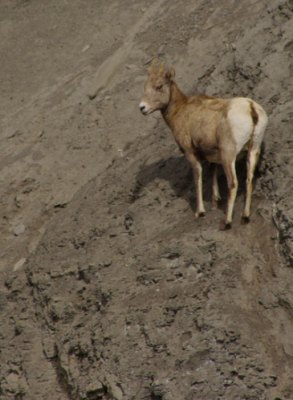
The Idaho Department of Fish and Game was directed to work with domestic sheep producers to develop “best management practices” to keep bighorn and domestic sheep apart. The problem lies in the fact that history shows that it takes only one interaction between the two to transmit disease to bighorn sheep and that interaction can go undetected.
There is no meaningful public participation in these negotiations which is just the way the woolgrowers want it. Nobody knows what these “bmp’s” will be or how they will affect other wildlife or habitat. It appears that hazing will be involved but there has been no mention as to what means will be used.
F&G expects to finish bighorn plans on time
By Nate Poppino
Times-News writer

Comments
I think each and every BLM and Forest office with bighorns present is going to have to conduct new NEPA on its grazing to examine the effects of the intensive hazing or other disturbance to be inflicted on public wild lands and that may disturb all kinds of critters – as well as the public attempting to recreate and enjoy the great outdoors, the effects of shifting or intensifying the domestic sheep use in previously less used areas and OTHER sensitive species habitats, the effects on Wilderness and WSAs, etc. This should be fun!
I think federal land management agencies should cancel allotments where conflicts occur. This won’t happen until bighorn are given some type of protection. Even as a sensitive species they would have more impact in decision making on allotments.
I worked on the Challis/Morgan Creek Bighorn study way back in 1968. We found that Bighorns wintering in the Challis area summered on the middle fork drainage of the Salmon River, an airline distance of over 40 miles. Bighorns in Big Creek travel as much as 50 miles from winter range to summer pasture. I think that Idaho Bighorns historically traveled even greater distances during migrations. With these distances in mind, trying to keep Bighorns and domestic sheep apart is going to be very difficult. The only REAL solution is to get domestic sheep OFF of public lands that have bighorn habitat anywhere near them. This will require buying out allotments or convincing BLM and USFS to close domestic sheep allotments in most areas north of the Snake River. Farm flocks are also a problem and we need to educate people to not keep domestic sheep or goats anywhere near where bighorn sheep live. Closing the domestic sheep allotments on the lower Salmon river,where the Bighorn Ram was killed recently, is a good place to start.
The only REAL solution is to get domestic sheep OFF of public lands that have bighorn habitat anywhere near them.
That is the only viable solution. Lots of people don’t understand the concept of dispersal.
No Pro, the real solution is to ban domestic sheep whether on private or public in any area big horn sheep inhabit. (not meant sacrastically) Wild sheep are amazing whether you watch them or are lucky enough to hunt them.
“Closing the domestic sheep allotments on the lower Salmon river,where the Bighorn Ram was killed recently, is a good place to start.”
Wasn’t the contact (reported by the rancher by the way) between the ram and the domestics on private land just above Spring Bar??
Yes Layton,
The interaction did occur on private land but the same producer uses nearby public allotments on both BLM and USFS lands. I think it would behoove the USFS and IDFG to build double fencing to restrict any further interaction between the two across the boundaries of private and public lands.
I have been told that the rancher only reported the interaction to the Idaho Woolgrowers Association who then reported it to IDFG. I have also been told that there was an attempt made by other individuals to keep the incident from being made public but that interested parties made sure that it was.
Ken,
Respectfully — my “sources” say that, in fact, Mr. Carlson (sp?) himself reported the ram to the F&G because he was concerned that it was ALREADY sick when it came to the flock on his home place.
I think I know which sources will be considered more reliable here, but I wanted to at least mention the other theory. 8)